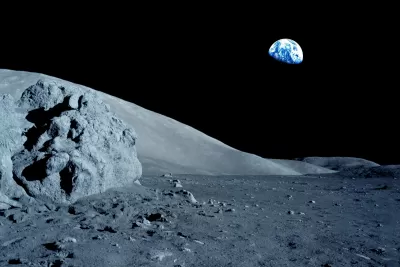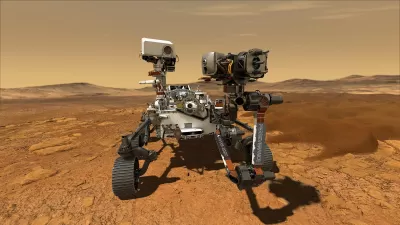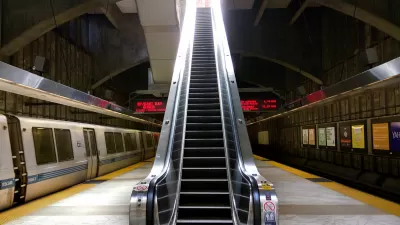Program proponents say this “visionary” endeavor “heralds a new era of human presence and economic activity beyond Earth.”

According to an article from The Economic Times, the U.S. Department of Defense has contracted with defense and aerospace company Northrop Grumman to build a lunar railway in preparation for a permanent human colony on the Moon.
“[T]his visionary endeavor aims to facilitate the seamless transportation of both goods and people across the lunar surface, heralding a new era of human presence and economic activity beyond Earth, as per a report by The Sun,” the article states.
The project, dubbed “Moon Train,” might sound silly, but the lunar surface area is equivalent to the size of Africa, making railway infrastructure critical to transport the materials and equipment needed to explore and colonize the Moon. The contract, part of the 10-year Lunar Architecture (LunA-10) Capability Study, covers research around the basics of developing a lunar rail network, including resources, construction using robots, inspection, maintenance, and repair. The final report is expected this June.
This tangible step toward colonization of space follows hypothetical and occasionally heated debates last year prompted by two books on the topic: City on Mars: Can We Settle Space, Should We Settle Space, and Have We Really Thought This Through? by Kelly Weinersmith and Zach Weinersmith and The First City on Mars: An Urban Planner’s Guide to Settling the Red Planet by Justin Hollander (both mentioned in Planetizen’s Top Planning Books of 2023). While many people are fascinated and excited by the idea of building cities from scratch on new planetary bodies, others say our attention and resources should be focused on solving problems on the planet we currently have.
FULL STORY: Will the US take people to the moon with ‘Moon Train’? Here’s all about the Lunar Transport

Study: Maui’s Plan to Convert Vacation Rentals to Long-Term Housing Could Cause Nearly $1 Billion Economic Loss
The plan would reduce visitor accommodation by 25,% resulting in 1,900 jobs lost.

North Texas Transit Leaders Tout Benefits of TOD for Growing Region
At a summit focused on transit-oriented development, policymakers discussed how North Texas’ expanded light rail system can serve as a tool for economic growth.

Using Old Oil and Gas Wells for Green Energy Storage
Penn State researchers have found that repurposing abandoned oil and gas wells for geothermal-assisted compressed-air energy storage can boost efficiency, reduce environmental risks, and support clean energy and job transitions.

Santa Barbara Could Build Housing on County Land
County supervisors moved forward a proposal to build workforce housing on two county-owned parcels.

San Mateo Formally Opposes Freeway Project
The city council will send a letter to Caltrans urging the agency to reconsider a plan to expand the 101 through the city of San Mateo.

A Bronx Community Fights to Have its Voice Heard
After organizing and giving input for decades, the community around the Kingsbridge Armory might actually see it redeveloped — and they want to continue to have a say in how it goes.
Urban Design for Planners 1: Software Tools
This six-course series explores essential urban design concepts using open source software and equips planners with the tools they need to participate fully in the urban design process.
Planning for Universal Design
Learn the tools for implementing Universal Design in planning regulations.
Ascent Environmental
Borough of Carlisle
Institute for Housing and Urban Development Studies (IHS)
City of Grandview
Harvard GSD Executive Education
Toledo-Lucas County Plan Commissions
Salt Lake City
NYU Wagner Graduate School of Public Service





























